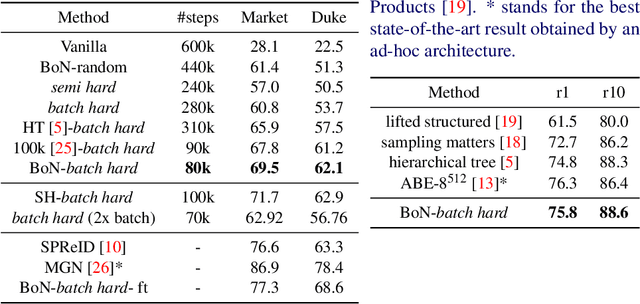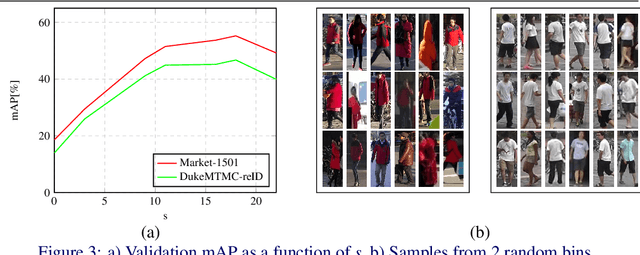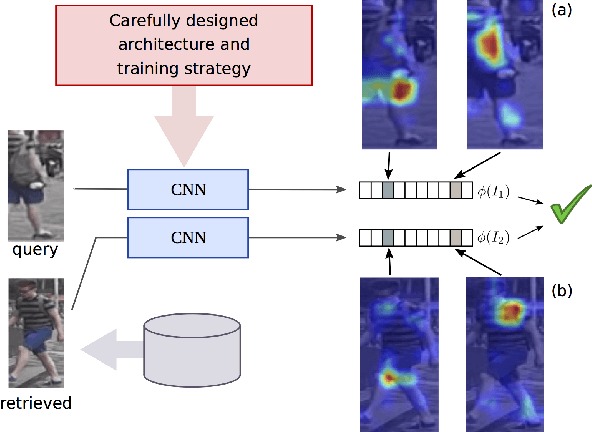Bojana Gajic
Bag of Negatives for Siamese Architectures
Aug 06, 2019



Abstract:Training a Siamese architecture for re-identification with a large number of identities is a challenging task due to the difficulty of finding relevant negative samples efficiently. In this work we present Bag of Negatives (BoN), a method for accelerated and improved training of Siamese networks that scales well on datasets with a very large number of identities. BoN is an efficient and loss-independent method, able to select a bag of high quality negatives, based on a novel online hashing strategy.
Re-ID done right: towards good practices for person re-identification
Jan 16, 2018



Abstract:Training a deep architecture using a ranking loss has become standard for the person re-identification task. Increasingly, these deep architectures include additional components that leverage part detections, attribute predictions, pose estimators and other auxiliary information, in order to more effectively localize and align discriminative image regions. In this paper we adopt a different approach and carefully design each component of a simple deep architecture and, critically, the strategy for training it effectively for person re-identification. We extensively evaluate each design choice, leading to a list of good practices for person re-identification. By following these practices, our approach outperforms the state of the art, including more complex methods with auxiliary components, by large margins on four benchmark datasets. We also provide a qualitative analysis of our trained representation which indicates that, while compact, it is able to capture information from localized and discriminative regions, in a manner akin to an implicit attention mechanism.
 Add to Chrome
Add to Chrome Add to Firefox
Add to Firefox Add to Edge
Add to Edge